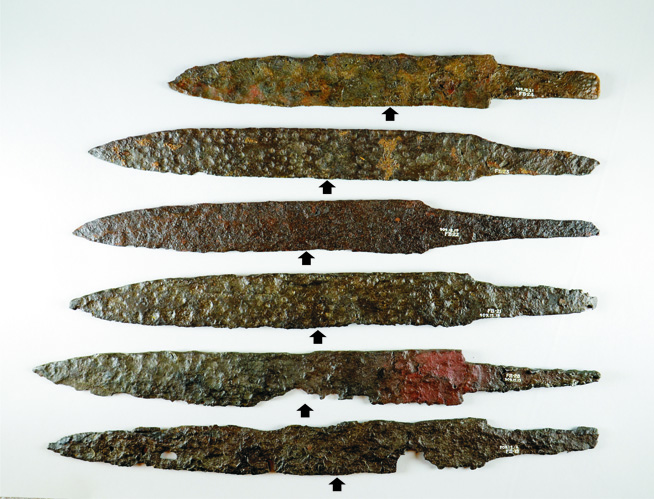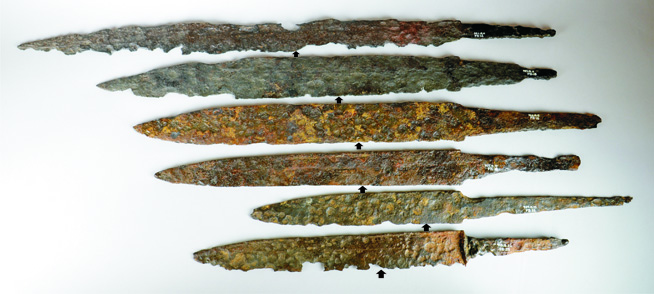Weapon Wednesday: Frankish "Seax" swords
Published
Categories
Author
Blog Post
In the 3rd century of the current era the term "Frank" was used by Romans and others to describe a group of Germanic tribes living in the Rhine valley. In the 4th century Franks settled within territory ruled by the Romans and were a recognised kingdom. After the fall of the Western Roman Empire the Frankish kingdom under their Merovingian kings spread over all of France (which to this day is named after this confederation of Germans). In the 8th century under the Carolingian dynasty, especially its greatest ruler, Charlemagne (Karl the Great), the Frankish kingdom spread to Germany and North Italy, creating what was later known as the Holy Roman Empire.
The ROM has a number of Frankish weapons that were obtained from a dealer in Mainz, Germany, a Mr. David Reiling. All of the objects are thought to be from the area of Mainz, but no more is known about their origin. They were acquired by Charles Currelly in 1909, and as usual that great museum-builder had one eye to quantity, and was not just selective with regards to quality. Many of these Mainz objects are of iron or steel, and are highly corroded, but it means that we have a groups of objects available for study that would not be if Currelly just wanted the most prize examples of any class of object. The seaxes are a classic example of this.
A "seax" is a single edged bladed tool or weapon. The term, found in Old English (seax, saex, sax, sex, etc - the word "saw" has the same root) and Old German (saks, etc) is derived from the term "to cut" and can be used in reference to anything from a pen-knife (a writsaex or writing-knife) to something as large as a sword (the Old English term "sweord" seems to specifically refer to a weapon). Although some very fine two-edged swords are known from Frankish contexts, these single edged weapons are probably the most common form of "sword" used by the Franks. This is no reason to demean them, however. German traditions of fighting with "large knives" or großes Messer became highly developed, and some of them may have been decorated (for a more pristine example of a seax, see one belonging to an Anglo-Saxon called Beagnoth).

Six Frankish seaxes from Mainz, Germany, 6th to 8th century (edge is downwards, the arrow indicates the line of balance), from top 909.15.21 (37.3 cm long, 301.1g); 909.15.20 (44 cm long, 409.5g); 909.15.19 (7th century, 45.1 cm long, 392.1g); 909.15.18 (45.6 cm long, 363.4g); 909.15.17 (48 cm long, 495.8g); 909.15.16 (47 cm long, 268.0g) - photo by Kay Sunahara.

Six Frankish seaxes from Mainz, Germany, 6th to 8th century (edge is downwards, the arrow indicates the line of balance), from top 909.15.11 (8th century, 68.9 cm long, 438.9g); 909.15.12 (58 cm long, 599.6g); 909.15.13 (57 cm long, 633.4g); 909.15.15 (50 cm long, 415.8g); 909.15.23 (45 cm long, 319.5g); 909.15.22 (6th century, 42.3 cm long, 348.9g) - photo by Kay Sunahara.


